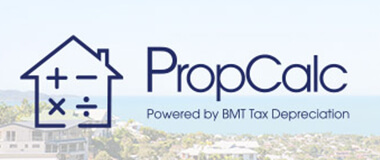What is tax depreciation?
What is tax depreciation?
Tax depreciation is a tax deduction claimed for the natural wear and tear of an income-producing building and its assets over time. It is generally the second biggest tax deduction for property investors, after interest.
Why should I claim?
Claiming tax depreciation reduces your taxable income, meaning you pay less tax. You may be eligible for thousands of dollars in depreciation deductions each year.
Who can claim?
Tax depreciation deductions are available for both residential investment properties and commercial buildings. Most properties, new and old, have depreciation available.
What can you claim?
You don’t need to spend money to claim tax depreciation. Tax depreciation deductions are split into two categories:
Division 43: Capital works deductions
Division 40: Plant and equipment depreciation
Capital works deductions
Capital works deductions
Capital works deductions (division 43) refer to the building’s structure and items that are permanently fixed to the property such as kitchen cupboards, doors and sinks.
Capital works typically make up between 85-90% of the total claim.
There are different rates of depreciation available for different properties based on their type, industry and construction commencement date.
Here are some examples of typical depreciable items you could claim under a capital works deduction:
Residential property:
Commercial property:
Plant and equipment depreciation
Plant and equipment depreciation
Plant and equipment assets (division 40) are items which are easily removable from the property, like carpet and blinds. These assets have a limited effective life as set out by the ATO and can generally be depreciated over time. Investors can claim depreciation deductions for more than 6,000 different ATO recognised plant and equipment assets.
There are some restrictions to claiming depreciation on previously used plant and equipment found in second-hand residential properties as legislation changed in May 2017.
Here are some examples of typical depreciable items you could claim under a plant and equipment deduction:
Residential property:
Commercial property:
Plant and equipment depreciation
Plant and equipment assets (division 40) are items which are easily removable from the property, like carpet and blinds. These assets have a limited effective life as set out by the ATO and can generally be depreciated over time. Investors can claim depreciation deductions for more than 6,000 different ATO recognised plant and equipment assets.
There are some restrictions to claiming depreciation on previously used plant and equipment found in second-hand residential properties as legislation changed in May 2017.
How do I claim depreciation?
How do I claim depreciation?
A tax depreciation schedule prepared by a specialist quantity surveyor like BMT Tax Depreciation is the
best way to substantiate your tax depreciation claim with the ATO.
Arranging a BMT Tax Depreciation Schedule couldn’t be easier.
1: Get a Quote
Find out how much your depreciation schedule will cost by requesting a quote.
2: Provide details
We’ll collect property details then contact your property manager or tenant to arrange access for one of our specialist staff to complete a property inspection.
3: Claim deductions
Your customised depreciation schedule is delivered to you and your nominated accountant.
Property investor case studies
Case studies
Tax depreciation FAQs
FAQs
Tax depreciation FAQs
Is my property too old to claim tax depreciation?
It is a common myth that older properties will attract no depreciation claim. However, both new and old properties will hold some depreciation benefits.
A depreciation schedule is the best way to ensure the biggest tax refund possible. A BMT Tax Depreciation Schedule covers all deductions available over the lifetime of a property.
Doesn't my accountant already take care of this for me?
BMT Tax Depreciation works with your accountant to ensure that your depreciation claim for your investment property is maximised each financial year. The ATO states in taxation ruling 97/25 that quantity surveyors such as BMT Tax Depreciation are one of the only recognised professions with the appropriate construction costing skills to estimate construction costs for depreciation purposes.
Can I claim tax depreciation on renovations?
Yes. Anything in the property that is part of a previous renovation will be estimated by our quantity surveyors and depreciated accordingly, even if the work was completed by a previous owner. This includes items that are not obvious, for example new plumbing, water proofing or electrical wiring.








